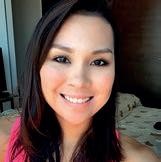They’ve been with you since puberty, but how much do you actually know about your boobs – and how they’ll change throughout the different stages of your life? Here’s a breakdown.


They’ve been with you since puberty, but how much do you actually know about your boobs – and how they’ll change throughout the different stages of your life? Here’s a breakdown.
In your 20s: enjoy the perks!
This period is when your breasts look and feel the firmest, as they comprise more fibrous connective tissue than fatty tissue. And while your breasts have fully developed, they can still change in size due to fluctuations in hormone levels and your weight.
In your 30s: same same, but different
Your breasts will retain much of their elasticity and firmness, but will feel softer as you approach your late 30s and more connective tissue is replaced with fat. If you’ve gone through pregnancy, the skin of your breasts might start to stretch due to weight fluctuations.
In your 40s: sags and the city
Breast sagging and declining elasticity is inevitable. This is because your breasts will become less dense as you age and the sag-preventing collagen starts to break down. The older you are, the higher the risk of breast cancer, so go for regular checkups and mammograms.
During pregnancy: get swole
This is a whole topic unto itself, but in a nutshell, your breasts will become bigger and have darker veins, your nipples will get bigger and stick out more, and your areolas will become darker.
After childbirth and breastfeeding: milk it for what it’s worth
Some women who didn’t breastfeed find that their breasts pretty much returned to how they were before pre- pregnancy, while others reported changes in cup size and shape. If you breastfeed, you’ll find that your breasts become less dense after you stop, since your body will stop producing the milk that’s filling them up. The size of your breasts will revert back to how it was pre-pregnancy, but know that it won’t be as perky as before.
After menopause: thanks for the mammaries
According to a review by University of Rochester Medical Center, this is when the milk-producing breast tissues shrink and lose shape, so the fullest part of your breasts will start to sag. Some parts of your breast might get fattier, due to loss of the aforementioned fibrous connective tissue, so don’t be surprised if your lady lumps become, well, lumpier. Keep an eye on these lumps – if they feel firmer than usual, get them checked by a doctor.

THE MOST COMMON CANCER FOR WOMEN
According to stats from the Singapore Cancer Society, breast cancer accounts for almost 30 percent of the cancer cases in women here. Here’s what you need to know.
Signs and symptoms:
Basically… any changes or differences in your boobs (including your nipples!) are a cause for concern. Play it safe by getting it checked out, because early detection can save lives.
You’re at risk if...
There are women in your family who have been diagnosed with breast cancer
“Ladies with a strong family history of breast cancer are most at risk,” says Dr See Hui Ti, senior consultant, medical oncology from Parkway Cancer Centre, Mount Elizabeth Hospital.
You had your period at an earlier age
If you had your period at the age of 11 or earlier, you’re at a higher risk of developing breast cancer. According to a study by Dr Françoise Clavel-Chapelon involving 100,000 women over a decade, women who had their first period before 12 (the average age of menstruation) run a higher risk, because of the hormones associated with reproduction and fertility.
You lead an unhealthy lifestyle
Did you know that if you drink two to three drinks a day, you run a 20 percent higher risk of breast cancer compared to women who don’t drink alcohol? Also, a study of postmenopausal women showed that those who are obese run a 20 to 40 percent increase in their risk of breast cancer compared to women within the healthy weight range.

According to the Singapore Cancer Society... 50% of breast cancer patients have no identifiable risk factors. So just because you didn’t check any of the boxes on the left doesn’t mean you’re risk-free.

How can you lower your risk?
Go for regular checks
You should do a self-examination every month (7 to 10 days after the start of your period), and go for clinical breast examinations every year. The earlier breast cancer is detected, the better the chances of survival. When you’re approaching your 50s, it’s recommended to go for mammograms every one to two years, depending on your risk factors. It’s best to talk to a doctor about this.
Lead a healthy lifestyle
It should go without saying, but sometimes, we get so caught up in our work and personal lives that we tend to neglect our health. Consider this a reminder for you to stick to a regular workout plan and a healthy diet, and to drink in moderation.
Preventive mastectomies
This is an option for women who are at very high risk (i.e., if they have a strong family history of breast cancer or carry genes or mutations associated with breast cancer risk). As its name suggests, the operation is performed before a woman is diagnosed with breast cancer, and is a major surgery. You have to consult a doctor for a proper assessment first.
Five years ago, Angelina Jolie talked about undergoing preventive double mastectomy because of her family history and how she carries a gene that increases her risk of developing breast and ovarian cancer. “I wanted to write this to tell other women that the decision to have a mastectomy was not easy. But it is one I am very happy that I made. My chances of developing breast cancer have dropped from 87 percent to under 5 percent,” Angelina wrote in a column for The New York Times.

I’M A SURVIVOR
It’s not easy dealing with a cancer diagnosis, so having a support system can make all the difference. We asked breast cancer survivors (and their caregivers!) what gave them strength during their battle, and here are their answers.

"God made me with a strong will, so I charged forward during the nine months of chemotherapy and radiotherapy treatments knowing in my heart that I’ll be completely healed. I’ve been in the pink of health for 22 years now. Also, my family gave me a lot of strength by being my pillar of support.”
– Cally Koh, 53
“We told her she can’t go back in time and change the fact that she has cancer, but she can change the ending. And she did!”
– Jasmine Koh, 56, Cally’s older siser

"The unconditional love and support from my family and friends helped me face the diagnosis, complete the treatment, and move forward with my life. They made me see that sometimes, storms come not to disrupt your life, but to clear a path.”
– Pika Sen, 45
“It was devastating to see my energetic, high octane wife and mother of my two young children knocked down by this challenging diagnosis. The vision of her returning to full health and happiness after the grueling treatments kept me focused on a hopeful future.”
– Sunit Chhabra, 47, Pika’s husband

"Remember that cancer is just a word! Stay strong, and make people wonder why you’re still smiling.”
– Linda Ng, 51

"One of the many things that cancer taught me is that I had to rely on others for help. My husband became my strength during the times when I was most vulnerable and terrified. Without his support, I don’t know how I would have made it through the toughest times of my journey. These experiences have definitely brought us much closer than we were before.”
– Amy Neary, 48
“Being there for my wife during her fight with cancer brought us closer together and made our relationship stronger. Sure, there were tough moments but it helped define what really mattered in life – each other!”
Dan Neary, 52, Amy’s husband

I found strength that I didn’t know I had since my diagnosis. I wanted to fight on and stay alive. I wanted to be healthy again and spend time with my loved ones – my husband, family, and close friends, who gave me immense support throughout the battle.”
– Branda Lai, 31
Did you know… that not all cancer treatments require chemotherapy?
Chemotherapy, which can be painful and comes with unpleasant side effects, has been routinely recommended for breast cancer patients because it reduces the risk of relapse. But now, there’s a new technology called MammaPrint that tests whether the tumor has a high or low risk of recurrence. This, in turn, can help doctors and patients decide whether they really need chemotherapy after the surgery. In a clinical trial, the use of MammaPrint was found to spare up to 46 percent of early stage breast cancer patients from chemotherapy treatments.
MammaPrint is available at all Parkway Pantai hospitals. You can also ask your doctor about it.

Survival rates
These are the five-year survival rates of breast cancer, according to Singapore’s National Registry of Diseases Office.
“Breast cancer is curable. And even after diagnosis, we can still lower our chance of recurrence by implementing lifestyle changes.”
– Dr See Hui Ti
The Breast Cancer Foundation (BCF) offers programmes and activities for those who need support. Head to www.bcf.org.sg to find out more, or if you want to lend a helping hand.
Images 123RF.com























